International Journal of Nanomaterials, Nanotechnology and Nanomedicine
Effect of salinity (Na2SO4) on stomata, and yield parameters of Indian mustard (Brassica juncea L) var. Goldi
Ruhi Khan1*, Farha Rehman1, Gulafshan1 and Aabshar Khan2
2Department of Biochemistry, Mohammad Ali Jauhar University,Rampur (U.P.) India
Cite this as
Khan R, Rehman F, Gulafshan, Khan A (2020) Effect of salinity (Na2SO4) on stomata, and yield parameters of Indian mustard (Brassica juncea L) var. Goldi. Int J Nanomater Nanotechnol Nanomed 6(2): 021-023. DOI: 10.17352/2455-3492.000036Here, our research on effect of increasing different concentrations (0, 4Mm hos/cm, 8Mm hos/cm and 12Mm hos/cm) of salt (Na2SO4) on plant growth ,and yield parameters of Brassica juncea (var. Goldi). After plant growth with salt treatment, identify the number of leaf with untreated plant. Here our experiment was completely randomize design with three replicates. After randomely selected plants start the process of observation of number of stomata in mature leaves on both sides (abaxial and adaxial) at 65 & 75 (DAS). Here, in our experiment determine the number of stomata due to different concentrations of salt (Na2SO4) as compared to control. However, at the maximum concentrations i.e (8Mm hos/cm and 12Mm hos/cm) of salt , stomata become close as compared with control and low level treatment (4Mm hos/cm) . On the other hand after the plant growth, next step of our experiment observation of the yield parameters of Brassica juncea (var. Goldi) at 120 DAS. The strongest reduction of yield parameters was observed in the 12Mm hos/cm treatment. Our result suggested that, due to salinity level stomata become destroy without show any damage on physiological characters.
Introduction
Salinity causes high effects on higher plants, both (halophytes and non-halophytes) [1]. The reduction in growth is consequence of several physiological responses including modifications of ions balance, water status. Mineral nutritions, stomatal conductances ,and photosynthetic efficiency [1,2]. However, literature on the stomatal differentiation in plants cultivars under saline conditions is scanty. The effects of salinity on growth, stomatal conductance, photosynthetic capacity, plants were grown at different Na2SO4 concentrations. Plant growth and leaf area development were strongly reduced by salinity. Stomatal conductance also was reduce by salinity, indicating that stomatal limitation of photosynthesis was increased. This correlation was not clear in bean plants. When plants is grown at high salinity, stomatal closure is induced by the presence of sodium ions in the apoplast surrounding the guard cells. Salt stress affected both stomatal and mesophyll conductances , and photosynthetic efficiency of both species. The fresh water/salt water comparison show that the photosynthetic capacity is directly reduce . Reduction in photosynthetic rates under increased salt stress are not only due to alimitation of CO2 diffusion. Exposure to salt stress involves complex changes in plant morphology, physiology, and metabolism, and a large number of studies have focus on salt-stressed, which effect on plant growth, leaf photosynthetic rates, CO2 fixation capacity, and leaf stomatal conductance [3,4]. High salinity, is a common abiotic stress factor that seriously effects on the crop production in arid and semi-arid regions. This type of stress are reducing the crop yield [5]. High salt concentrations in root effects the plant growth ,and yield. Salinity may reduce the crop yield by upsetting water and not proper nutritional balance of the plants [6].
Materials and method
All the experiments was conduct in the research laboratory of Department of Botany, Sir Syed Faculty of Science, Mohammad Ali Jauhar University, Rampur (U.P.) India. Seeds of Indian mustard (var. Goldi) was use in this study. Collection of mustard seeds , from authentic seed source in Rampur. Here, in our work identify the effect of different concentrations (0, 4Mm hos/cm, 8Mm hos/cm and 12Mm hos/cm) of salt (Na2SO4) on the number of stomata in the mature leaf of mustard (Brassica juncea L.. var. Goldi) at 65 & 75 days after sowing (DAS). Stomatal density was study using the method of Teare, et al. [7]. Using the nail polish is a traditional method to measure stomatal density. In this process a thin layer of nail polish was apply on the both side (abaxial and adaxial) on the middle of the leaf. A small strip of clear sellotape was gently pressed over the nail polish part of the leaf. After few minutes, the stomata of leaves attached on the tape ,and the sellotape pest on the clean slide .The number of stomata was count under the light microscope ,on such leaf surface impression of both sides (abaxial and adaxial), in a cm2 area of eye piece (= 0.41 mm2 of leaf surface). Our other experiment are based on the method of yield parameters from each treatment at 120 DAS. Ten pods was randomly selected and counted, and weighed to calculate the seed yield per plant and measured on a meter scale for average a pod length.
Results and Discussions
This result is reveal that in saline condition. The number of stomata are always decline with increasing salt concentrations (0, 4Mm hos/cm, 8Mm hos/cm and 12Mm hos/cm). In Figures (a, b, c, & d) high effect of salinity show on the adaxial surface of the leaf as compare to the abaxial surface at both stages (65 DAS &75 DAS). The highest reduction of stomata was observe at the 8Mm hos/cm and 12Mm hos/cm treatments levels than 4Mm hos/cm, and control plants. High salinity strongly reduced plant growth. Salt stress damages the photosynthetic activities at multiple levels, such as pigments biosynthesis, stomatal functioning and gaseous exchange, structure and function of thylakoid membrane, electron transport and enzyme activities (Sudhir and Murthy 2004) [8]. At the stage of maturity, plants were harvest. In our experiment, the number of pods per plant, the number of seeds per pod, seeds yield and pods length was recorded at 120 DAS. In figures (e, f, g, & h), all the yield parameters (pods plantˉ¹ ,Numer of seeds podˉ¹, Seeds yield, and Pods length ), show reduction at different treatment levels (0, 4Mm hos/cm, 8Mm hos/cm and 12Mm hos/cm). Similarly, studies Islam, et al. [9] and Mahmoodzadeh [10], it was report that due to increasing salinity levels, yield and yield associated traits were reduced.
Conclusion
However, it is possible that the reduction of physiological parameter and yield parameters is caused by salinity. Our experiment was conduct to investigate the effects of different concentrations (0, 4Mm hos/cm, 8Mm hos/cm and 12Mm hos/cm) of salt (Na2SO4) on morphological and yield parameters of Brassica juncea (var. Goldi), along with non-treated plants in measurement periods (65, 75 and 120 DAS). More than half a billion hectares of land are not being properly used for crop production. This result clearly demonstrate that the effect of salt on stomata and yield are harmful, stomata become closure and reduce the process of gas exchanges.
Acknowledgment
Author are thankful to the professors ,department of Botany, Mohammad Ali Jauhar University, Rampur India, for valuable discussion, criticism on the manuscript, and skillful assistance in simple way.
Author are thankful to the professors ,department of Botany, Mohammad Ali Jauhar University, Rampur India, for valuable discussion, criticism on the manuscript, and skillful assistance in simple way.
- Greenway H, Munns R (1980) Mechanisms of salt tolerance in non-halophytes. Annu Rev Plant Physiol 31: 149-190. Link: https://bit.ly/3aLdZnx
- Munns R, Termaat A (1986) Whole plant responses to salinity. Aust J Plant Physiol 13: 143-160. Link: https://bit.ly/2QdHZii
- Munns R, Tester M (2008) Mechanisms of salinity tolerance. Ann Rev Plant Biol 59: 651-681. Link: https://bit.ly/2FB8MD1
- Chaves MM, Flexas J, Pinheiro C (2009) Photosynthesis underdrought and salt stress: Regulation mechanisms from whole plant to cell. Ann Botany 103: 551-560. Link: https://bit.ly/34paodt
- Munns R, Tester M (2008) Mechanisms of salinity tolerance. Ann Rev Plant Biol 59: 651-681. Link: https://bit.ly/31i9ttC
- Islam MR, Bhuiyan MAR, Prasad B, Quddus MA (2001) Effect of salinity on yield and component characters in rapeseed and mustard varieties. Journal of Biological Sciences s1: 840-842. Link: https://bit.ly/2CKL1r4
- Teare ID, Peterson CJ, LAW AG (1971) Size and frequency of stomata cultivars of Triticum aestivum and other species. Crop Sci II: 496-498. Link: https://bit.ly/31hlAXR
- Sudhir P, Murthy SDS (2004) Effects of salt stress on basic processes of photosynthesis. Photosynthetica 42: 481- 486. Link: https://bit.ly/2YinpSg
- Islam MR, Bhuiyan MAR, Prasad B, Quddus MA (2001) Salinity effect on yield and component characters in rapeseed and mustard varieties. Journal of Biological Sciences s1: 840-842. Link: https://bit.ly/2CKL1r4
- Mahmoodzadeh H (2008) Comparative study of tolerant and sensitive cultivars of Brassica napus in response to salt condition. Asian Journal of Plant Science 7: 594-598. Link: https://bit.ly/2E664oZ

Article Alerts
Subscribe to our articles alerts and stay tuned.
 This work is licensed under a Creative Commons Attribution 4.0 International License.
This work is licensed under a Creative Commons Attribution 4.0 International License.

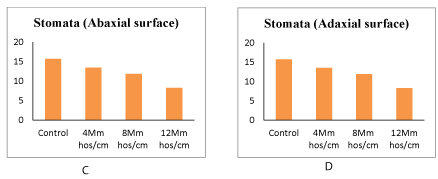
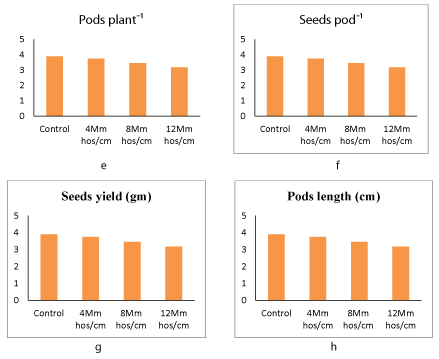
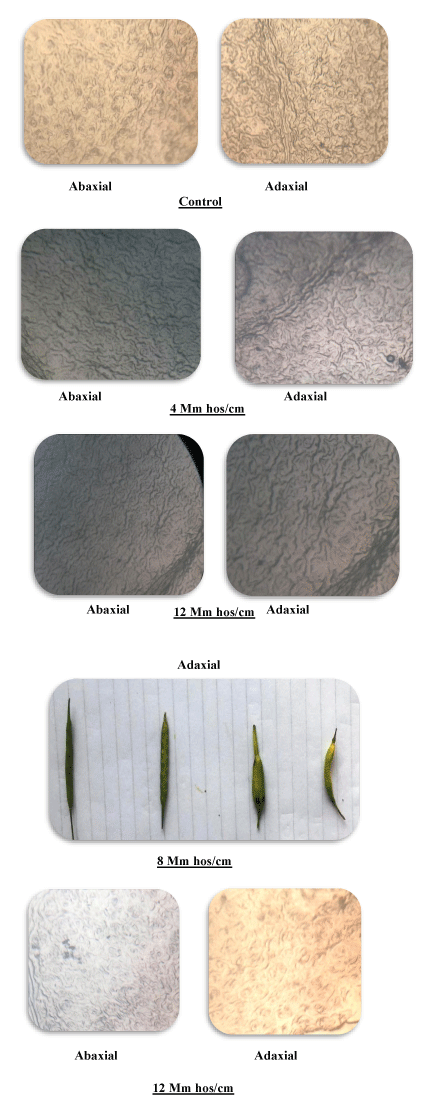
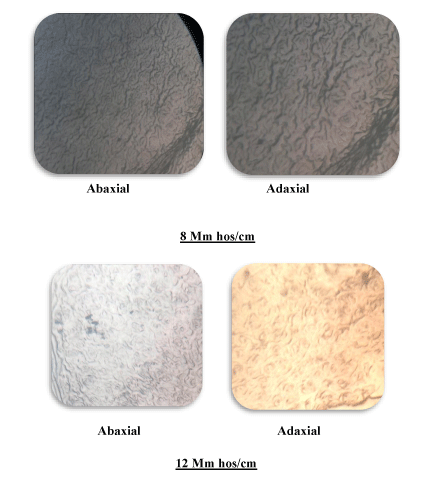
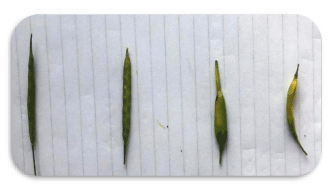
 Save to Mendeley
Save to Mendeley
